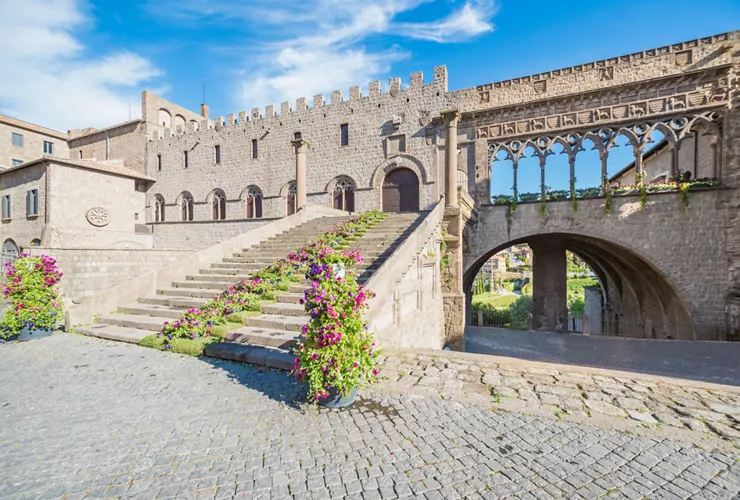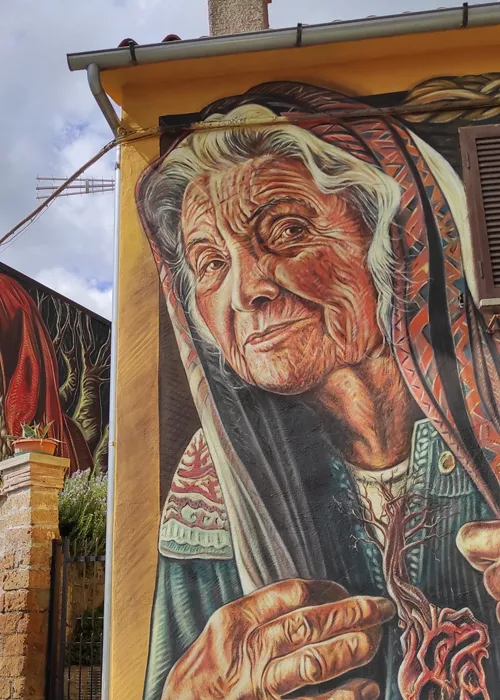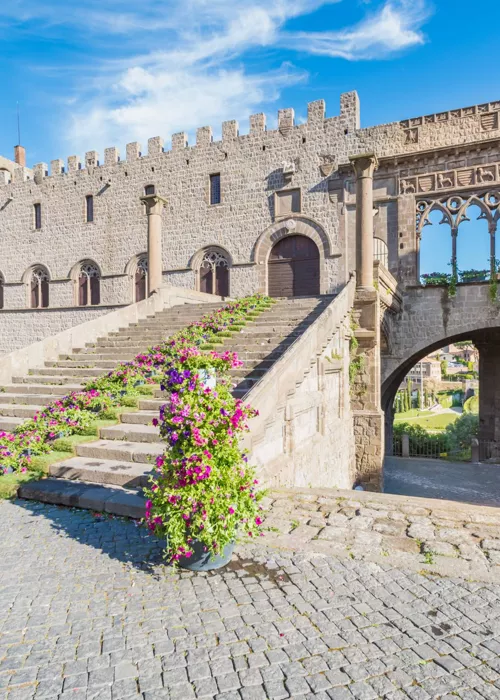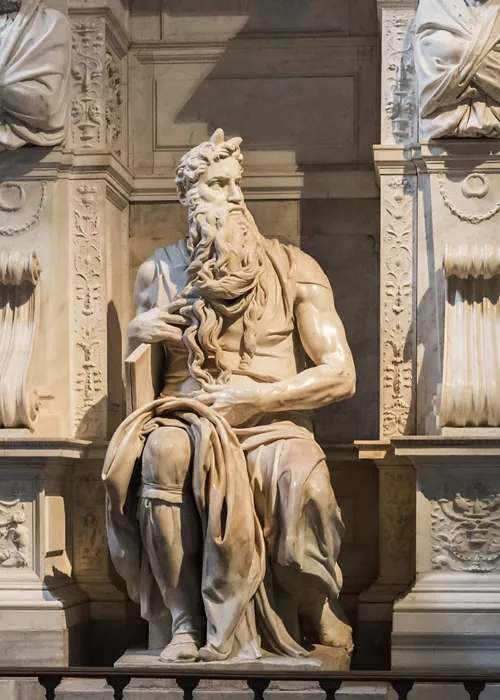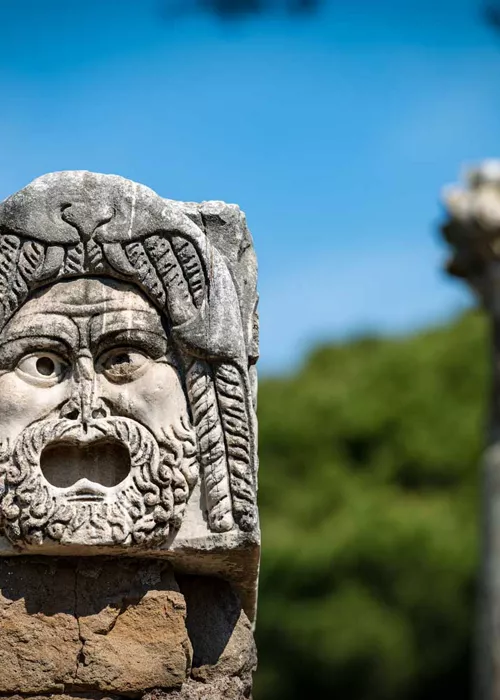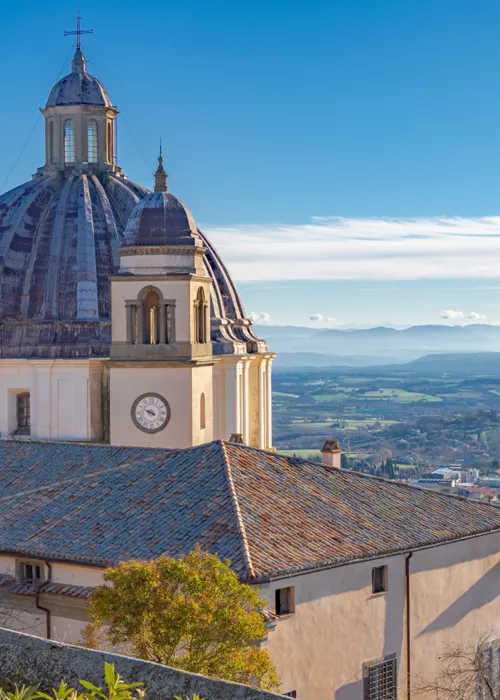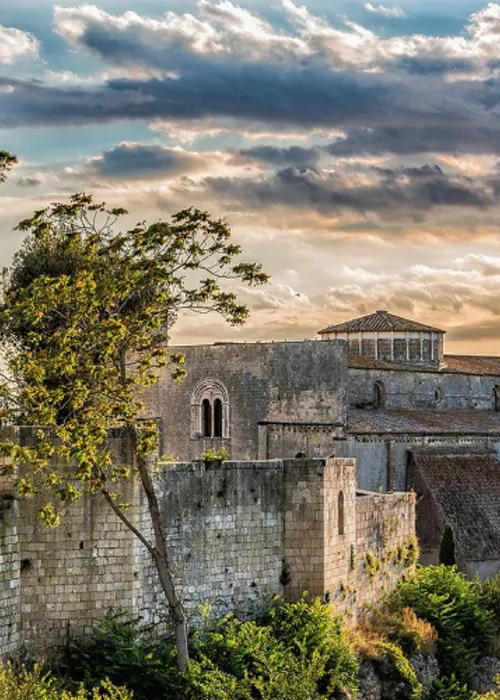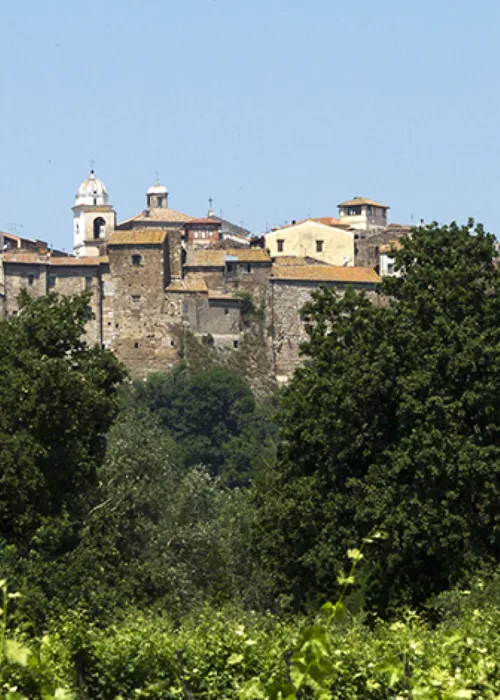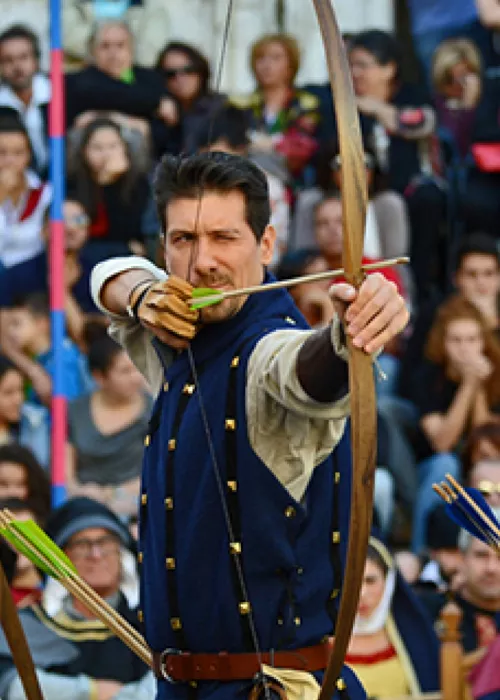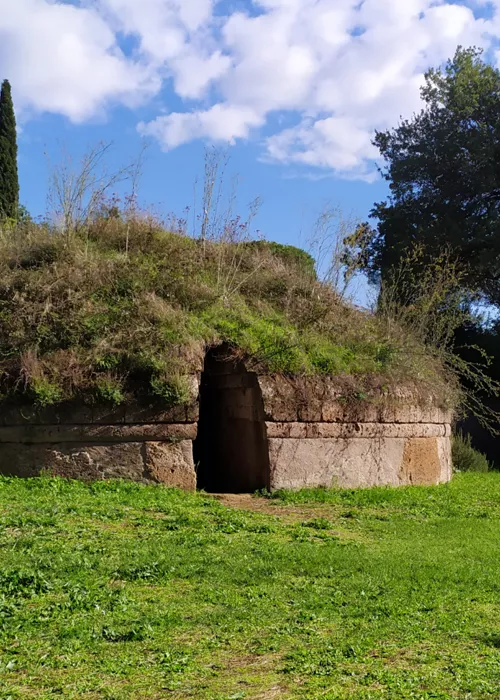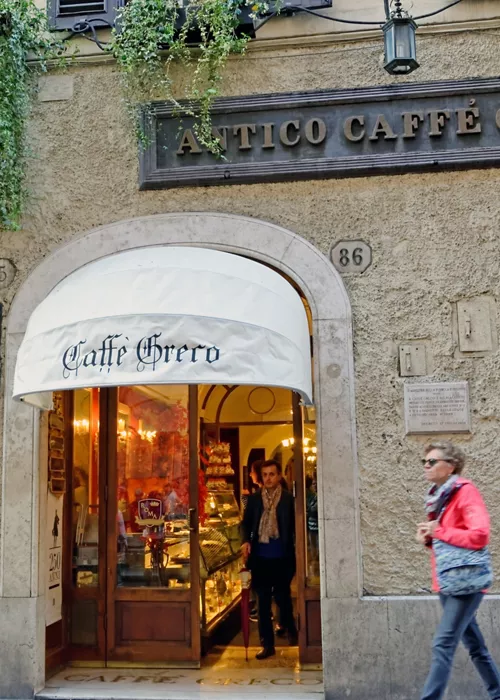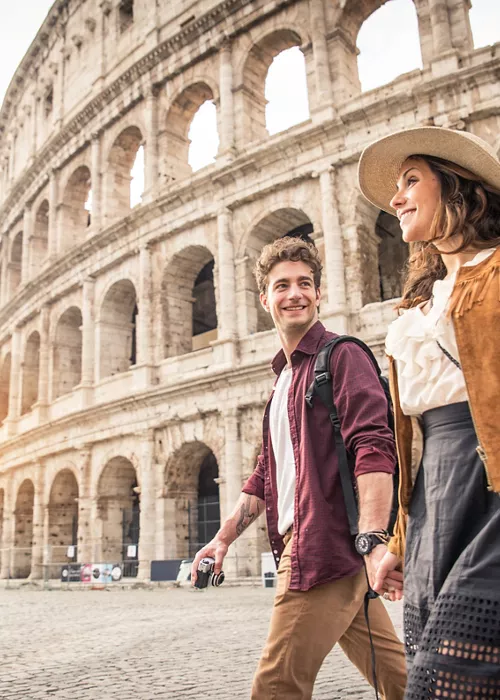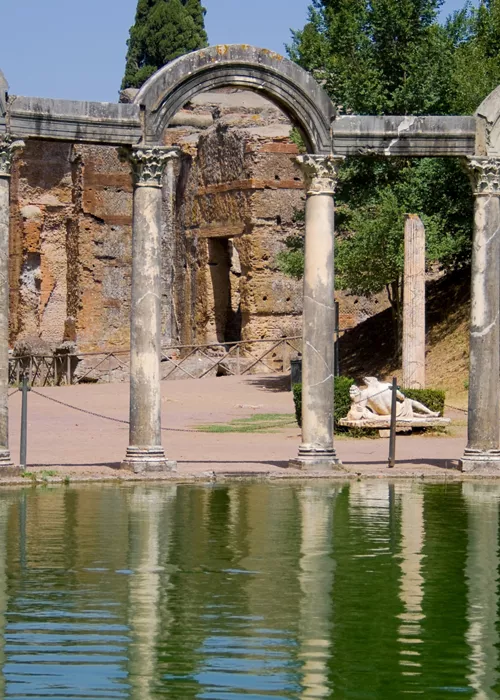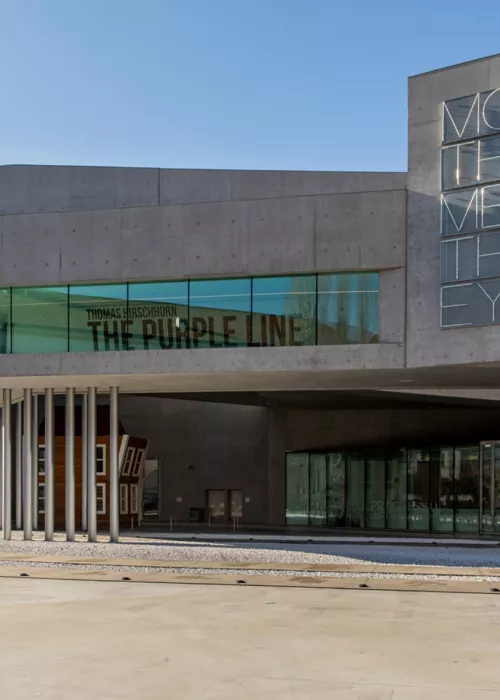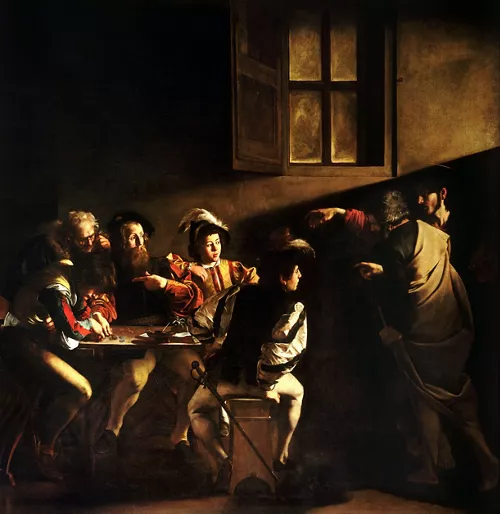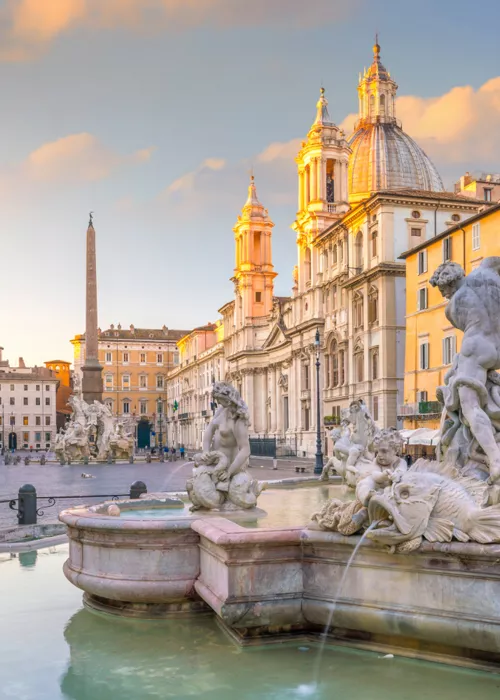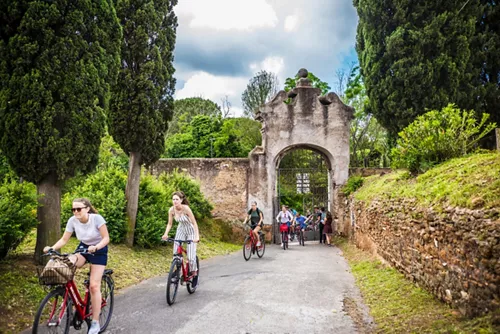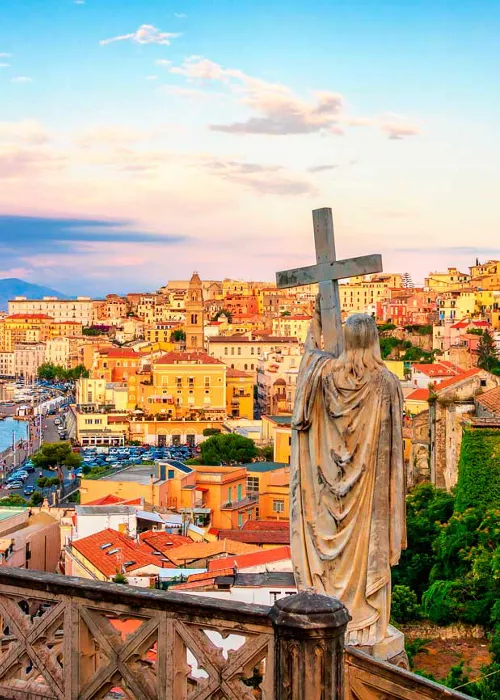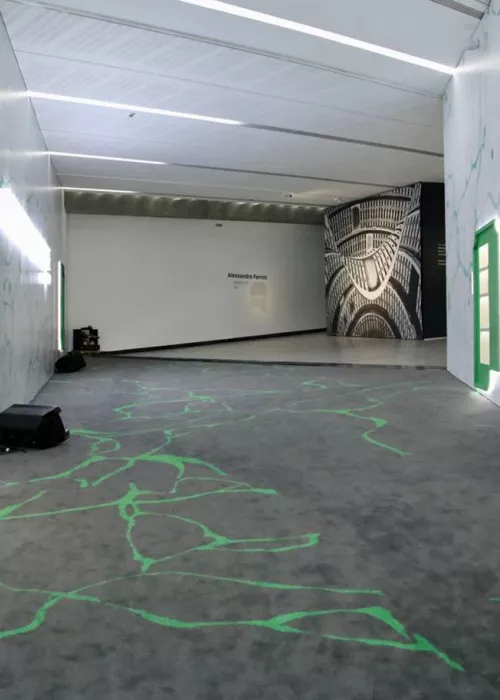Viterbo, a place for popes and spa centres
Viterbo is a beautiful place of art that offers a journey back in time through the halls of the elegant Papal Palace, through intact medieval alleys, monumental fountains, and Renaissance patrician palaces. An ancient land that preserves fascinating Etruscan vestiges, such as the Cava di Sant'Antonio and the necropolis of Castel d'Asso, rich in thermal springs immersed in nature where you can enjoy hot baths in an enchanting landscape.
10 things to see in Viterbo
Every visit to Viterbo begins at the papal palace, with its beautiful columned loggia with pointed arches, built from 1257 onwards to provide the pontiff with a safer seat than Rome, scene of bitter disputes back in the day: here is what has gone down in history as the Sala del Conclave (from the Latin cum clave, under lock and key) where the cardinals, divided over the name of the new pontiff, were segregated until an agreement was reached. It took 33 months for Gregory X to be elected and since then the term conclave has been used to refer to the meeting of cardinals called to elect a new pope. The Papal Palace is located in the elegant Piazza San Lorenzo, which is overlooked by the 12th-century cathedral, which should be seen together with the Museo Colle del Duomo.
The visit to Viterbo goes on through the alleys of the evocative San Pellegrino district, a walk in the Middle Age, among the characteristic 'bridge' houses connected at first or second floor level, between which there are evocative covered passageways, most being accessed by stairways, locally called “profferli”: the most beautiful one is the Alessandri house, with its internal staircase flanked by a parapet. The neighbourhood is also home to the Museum of the Sodalizio dei Facchini di Santa Rosa, the porters in the city's most heartfelt and deep-rooted festival, who on the 3 September carry in procession the very heavy (5100 kg!) Macchina di Santa Rosa, a sort of 30-metre high tower: the museum allows visitors to enter into the spirit of a popular festival that has been recognised by Unesco as an intangible World Heritage Site.
The Museo della Ceramica della Tuscia is lovely, housed on the ground floor of Palazzo Brugiotti, a splendid 16th-century residence, with frescoes and beautiful fountains in the atrium and garden. After all, Viterbo is a city of water: the Fontana Grande, in the so-called square, is just one of the many monumental fountains that spring from every square in the historic centre. Just a few more steps and you end up in the square of the Palazzo dei Priori, which once was the symbol of the city's power, with large frescoed rooms, such as the Palatine Chapel painted by Filippo Cavarozzi and Marzio Ganassini.
The city's most ancient origins can be explored at the National Etruscan Museum at Rocca Albornoz, dedicated to Etruscan archaeology, following with a visit to the spectacular necropolis of Castel d'Asso, with its tombs carved into the rock in the hot springs area. Among the Etruscan vestiges is the Cava di Sant'Antonioalong the Signorino road: this is a very narrow path carved into the tufa that joins the Signorino district to the Faul gate, one of the many hollow streets that the Etruscans built for defensive or sacred purposes, which remains a mystery.
In Viterbo, surrounded by thermal springs and pools in the countryside
If you love soaking in warm thermal waters, no matter the season, Viterbo is definitely for you. Around the city there are several springs where you can take warm baths in natural places, and free of charge!
Pilgrims on the Via Francigena encounter on their route the Bagnaccio thermal baths, a pleasant park run by an association that allows free admission for those who only use the pools, while a modest contribution is required to access the services.
On the Terme road, 2.5 km from the town, there are the Carletti pools pretty pools in the green with vast lawns next to them where you can lie down and sunbathe.
On the road to the Bullicame you will find the so called thermal spring, mentioned by Dante in Inferno, which gushes from a small natural crater (you cannot get close, but you can see it through a transparent parapet) to feed large pools in an idyllic landscape. Of course, there is no shortage of spa centres in Viterbo with all kinds of services and treatments: the Terme dei Papi offers a' huge pool, a natural grotto and a path with hot and cold pools, ideal for reactivating circulation.
On the table acquacotta and pignataccia
Viterbo offers a peasant cuisine that draws on the products of its generous land: here in winter, you can try a hearty chestnut and chickpea soup or the lighter acquacotta a minestrone with a few vegetables enriched with an egg and bread croutons. On the occasion of the feast of Santa Rosa, however, you cannot miss the pignattaccia a dish made of tripe and other poor cuts of meat with potatoes, flavoured with herbs and slowly baked.



